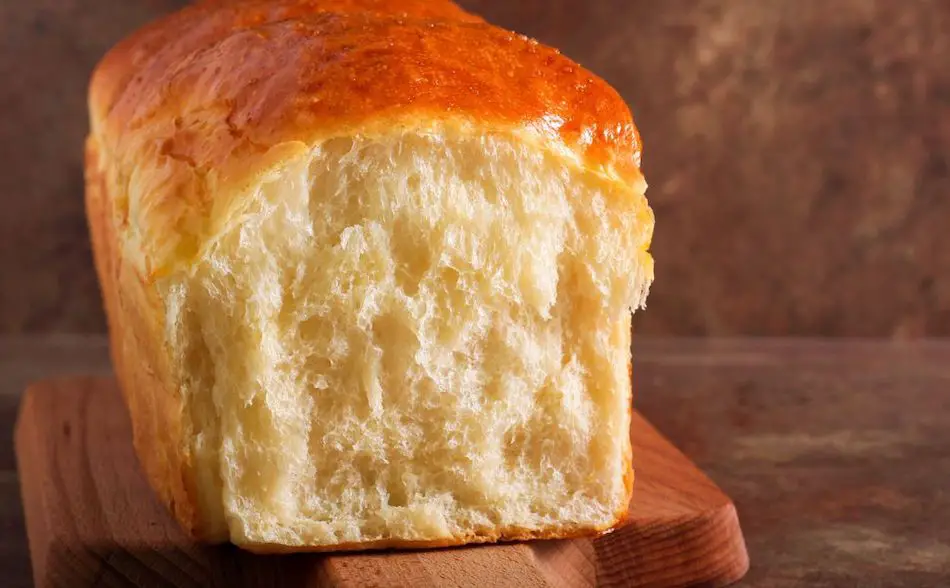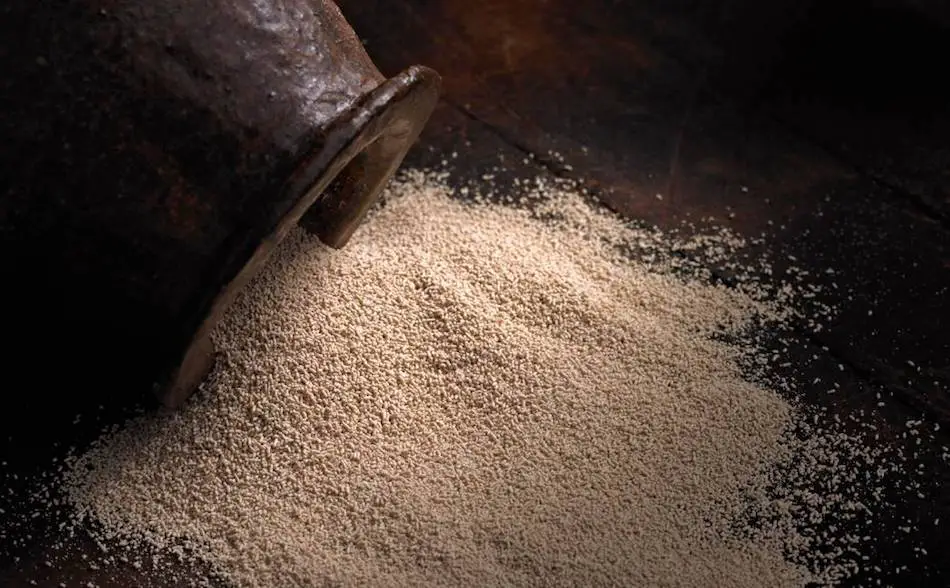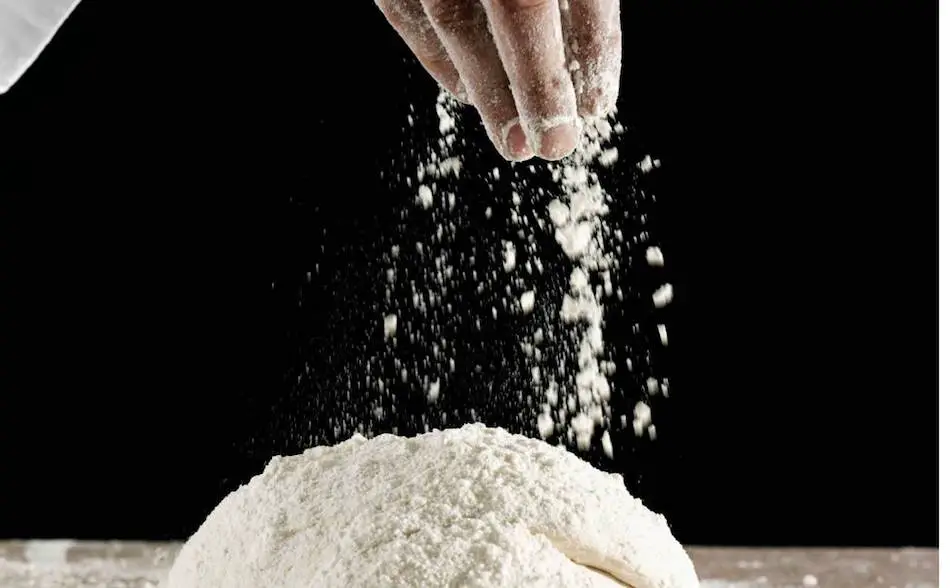
If you’re like many home bakers, you may have experienced frustration when your bread machine bread turns out dense and disappointing. But fear not – achieving perfectly fluffy bread in a bread machine is easier than you might think! In this article, we’re sharing our top tips for troubleshooting common mistakes and ensuring your bread is light, airy, and utterly delicious. From selecting the right flour to kneading the dough gently and using the correct machine settings, our expert advice will help you elevate your bread-making skills and impress your family and friends with your homemade, bakery-worthy bread.
To get perfectly fluffy bread machine bread, it’s essential to follow a few key tips and tricks. First, measure your ingredients accurately, including using fresh yeast and the right type of flour for your recipe. Allow sufficient rising time and avoid overworking the dough during kneading. Be sure to select the right machine settings and follow the instructions carefully. Finally, measure your liquid accurately and make adjustments gradually to avoid adding too much or too little.
| Tips and Tricks | Mistakes to Avoid |
|---|---|
| Measure ingredients accurately | Incorrect measurements |
| Use fresh and properly stored yeast | Old or expired yeast |
| Allow sufficient rising time | Not enough rising time |
| Knead dough gently and for the recommended amount of time | Overworking the dough |
| Use the right type of flour for the recipe | Using the wrong type of flour |
| Select the right machine settings and follow the instructions carefully | Incorrect machine settings |
| Measure liquid accurately and make adjustments gradually | Not enough or too much liquid |
7 Reasons Your Bread Machine Bread Isn’t Fluffy
When it comes to making fluffy bread in a bread machine, precision is key. These common mistakes and offer practical tips on how to avoid them, so you can achieve perfect, fluffy bread every time you use your bread machine.
1. Incorrect Measurements
When it comes to making bread in a bread machine, getting the measurements right is crucial for achieving the perfect texture and consistency. Incorrect measurements, especially when it comes to flour and liquid, can cause the dough to be too dry or too wet, which can result in a dense loaf of bread.
If the dough is too dry, it will not rise properly and the bread will turn out tough and heavy. On the other hand, if the dough is too wet, it will not hold its shape and the bread will be flat and dense. So, it’s essential to use a kitchen scale or measuring cups and spoons to ensure that you are adding the right amount of flour and liquid to the bread machine. This may seem like a small detail, but it can make a big difference in the outcome of your bread.

2. Old Yeast
Another common mistake that can lead to a dense loaf of bread is using old or expired yeast. Yeast is a living organism that is responsible for the fermentation process that makes bread rise. When yeast is past its prime or has been improperly stored, it may not be as active or potent, which can result in the bread not rising properly.
This can lead to a dense loaf that doesn’t have the light and fluffy texture that we all crave in our bread. To avoid this issue, make sure to always check the expiration date on your yeast packet or jar and store it in a cool, dry place. If you’re not sure whether your yeast is still good, you can do a quick test by mixing it with warm water and sugar to see if it starts to foam. If it does, then your yeast is still active and ready to use.

3. Not Enough Rising Time
The rising time of the dough is a crucial step in making fluffy bread in a bread machine. During this time, the yeast ferments the sugar in the dough, releasing carbon dioxide that causes the dough to rise and expand. If the dough is not allowed to rise for a sufficient amount of time, the bread will be dense and not fluffy. This is because the gluten in the dough has not had enough time to develop and stretch, which is essential for creating a light and airy texture in the bread.
The amount of time needed for rising depends on various factors such as the temperature, humidity, and the type of yeast used. As a general rule of thumb, the dough should double in size during the rising time. This can take anywhere from 1-2 hours, depending on the recipe and the environmental factors. To ensure that your bread is light and fluffy, be patient and give the dough enough time to rise properly. Don’t rush the process or you’ll end up with a dense and disappointing loaf.
4. Overworking the Dough
Kneading is an important step in making bread, as it helps to develop the gluten, a protein that gives bread its structure and texture. However, overworking the dough by kneading it for too long or too vigorously can cause the gluten to develop too much, resulting in a dense and tough loaf. This happens because the gluten becomes too tight and compact, making it difficult for the bread to rise properly.
To avoid this issue, it’s important to follow the recipe instructions and knead the dough for the recommended amount of time. Typically, this is around 10-12 minutes, depending on the recipe and the type of flour used. You can also use a stand mixer with a dough hook attachment to knead the dough more easily and evenly. The key is to be gentle and avoid overworking the dough.
5. Wrong Flour
When it comes to making bread in a bread machine, choosing the right type of flour is essential for achieving the perfect texture and consistency. Using the wrong type of flour, such as cake flour or bread flour instead of all-purpose flour, can result in a dense loaf. This is because different types of flour have different protein contents, which affects the gluten development in the dough.
All-purpose flour is the most commonly used type of flour for making bread, as it has a moderate protein content that allows for a good balance between gluten development and a light texture. Bread flour, on the other hand, has a higher protein content that is ideal for making yeast breads, but can result in a denser loaf if used in excess. Cake flour, on the other hand, has a lower protein content, which can result in a weak structure and a dense loaf of bread. So, it’s important to use the right type of flour for your recipe and to avoid substituting one type for another unless it’s specified in the recipe.

6. Incorrect Machine Settings
Another reason why people might not achieve fluffy bread in a bread machine is due to incorrect machine settings. Using the wrong settings on the bread machine or not following the instructions can cause the bread to not rise or bake properly, resulting in a dense loaf. Bread machines typically have a variety of settings, including options for different types of bread, crust color, and loaf size. It’s important to select the right setting for your recipe and to follow the instructions carefully.
For example, if your recipe calls for a longer rising time, make sure to select a setting that allows for a longer cycle. Also, be sure to add the ingredients to the bread machine in the correct order, usually starting with the liquid and then adding the dry ingredients. If you’re unsure about which setting to use, consult the user manual or recipe book that came with your bread machine.
7. Not Enough or Too Much Liquid
When it comes to making bread in a bread machine, getting the liquid measurements just right is crucial for achieving the perfect texture and consistency. Using too little liquid can cause the dough to be dry and dense, while using too much liquid can cause the dough to be too wet and not rise properly. It’s essential to follow the recipe instructions carefully and to measure the liquid accurately.
A good rule of thumb is to use slightly less liquid than the recipe calls for, as the dough will release some moisture during the rising process. If the dough looks too dry, you can add a small amount of liquid, such as water or milk, until it comes together into a smooth and elastic ball. On the other hand, if the dough looks too wet or sticky, you can add a little bit of flour until it comes together into a manageable ball. The key is to be patient and make adjustments gradually, as adding too much liquid or flour at once can throw off the entire recipe.
Why Isn’t My Bread Fluffy? The Top FAQs Answered
Whether you’re a beginner or a seasoned bread machine baker, the FAQs can help you to achieve perfectly fluffy bread every time. Here we will address common challenges such as getting the right flour, yeast, or liquid proportions, choosing the correct settings, or adding sugar or milk to your recipe.
What type of flour should I use to get fluffy bread machine bread?
When it comes to making fluffy bread in a bread machine, the type of flour you use can make a big difference in the texture and structure of your bread. All-purpose flour is the most commonly used type of flour for making bread, as it has a moderate protein content that allows for a good balance between gluten development and a light texture. Bread flour, on the other hand, has a higher protein content that is ideal for making yeast breads, but can result in a denser loaf if used in excess. Cake flour, on the other hand, has a lower protein content, which can result in a weak structure and a dense loaf of bread.
Can you add milk to make bread fluffy?
Adding milk to your bread machine recipe can indeed make the bread fluffier. The proteins and sugars in milk can help to create a soft and tender crumb, while also improving the texture and flavor of the bread. However, it’s important to be cautious when adding milk to bread machine recipes, as too much can make the dough too wet and difficult to work with. If you’re adding milk to a recipe that doesn’t call for it, be sure to reduce the amount of liquid in the recipe accordingly.
How does altitude affect the fluffiness of bread machine bread?
Altitude can definitely affect the fluffiness of bread machine bread. At higher altitudes, the air pressure is lower, which can cause bread to rise more quickly and to a greater extent. This can result in bread that is too airy and dry, with large holes in the crumb. To compensate for this, you may need to adjust the ingredients and/or settings in your bread machine recipe.
Here are some general tips for making bread machine bread at high altitudes:
- Adjust the amount of yeast: At higher altitudes, you may need to reduce the amount of yeast in your recipe to prevent the bread from rising too much. Start by reducing the yeast by about 25% and adjust as needed.
- Adjust the amount of liquid: The lower air pressure at high altitudes can cause the dough to be too dry. Try increasing the amount of liquid in your recipe slightly to compensate.
- Adjust the baking time and temperature: Bread may bake faster at high altitudes due to the lower air pressure. Check the bread frequently towards the end of the baking time and adjust as needed.
- Experiment with different recipes: If you’re having trouble achieving the desired fluffiness with your current recipe, try experimenting with different recipes that are specifically designed for high altitude baking.
What is the best bread machine for making fluffy bread?
When it comes to choosing the best bread machine for making fluffy bread, there are several factors to consider, including the machine’s features, performance, and overall quality. Here are some of the key features to look for in a bread machine:
- Large capacity: A bread machine with a large capacity can make bigger loaves, which can be helpful if you have a large family or like to bake bread in bulk.
- Multiple settings: Look for a bread machine with multiple settings, including settings for different types of bread and crust colors. This will give you more options and flexibility when it comes to baking different types of bread.
- Delayed start timer: A delayed start timer can be a helpful feature, as it allows you to set the machine to start baking at a later time. This can be useful if you want to wake up to freshly baked bread in the morning or have bread ready for when you come home from work.
- Easy to clean: Look for a bread machine that is easy to clean, with removable parts that can be washed in the dishwasher.
- Good reviews: Be sure to read reviews from other customers to get a sense of the machine’s performance and overall quality.
Can I use a bread improver to make my bread fluffier in a bread machine?
You can also use a bread improver to make your bread fluffier in a bread machine. A bread improver is a blend of enzymes and other ingredients that can help to improve the texture, flavor, and overall quality of bread. Some bread improvers can help to increase the rise and fluffiness of bread, which can be especially useful if you’re having trouble achieving the desired fluffiness with your bread machine.
However, it’s important to note that using a bread improver is not always necessary, and you can still achieve perfectly fluffy bread without it. If you’re interested in using a bread improver, be sure to choose a high-quality product and follow the manufacturer’s instructions carefully. You may need to adjust the amount of other ingredients in your recipe to account for the addition of the bread improver.
Can adding sugar help make bread fluffier in a bread machine?
Adding sugar to your bread machine recipe can help to make the bread fluffier, but only up to a certain point. Sugar acts as a food source for yeast, which can help the dough to rise and become fluffier. However, too much sugar can have the opposite effect and actually inhibit the rise of the dough, resulting in a denser loaf.
When using sugar in a bread machine recipe, it’s important to use the right amount for the recipe and to adjust the other ingredients accordingly. For example, if you’re using a recipe that already includes sugar, you may need to reduce the amount of sugar you add to the recipe to avoid over-sweetening the bread and to prevent it from becoming too dense.
How long should I let the dough rise for fluffy bread machine bread?
If you want fluffy bread machine bread, the rising process is a critical step that can’t be overlooked. As I always say, “Patience is key!” While most bread machine recipes recommend a rising time of 1-2 hours, this can vary depending on the recipe and other factors. To get perfectly fluffy bread, it’s important to monitor the dough closely and let it rise until it has doubled in size and feels light and airy to the touch.
If you find that your bread isn’t rising enough, you can let it rise for an additional 15-30 minutes or until it reaches the desired size and texture. Just be careful not to let it rise for too long, as over-rising the dough can result in a denser loaf.

